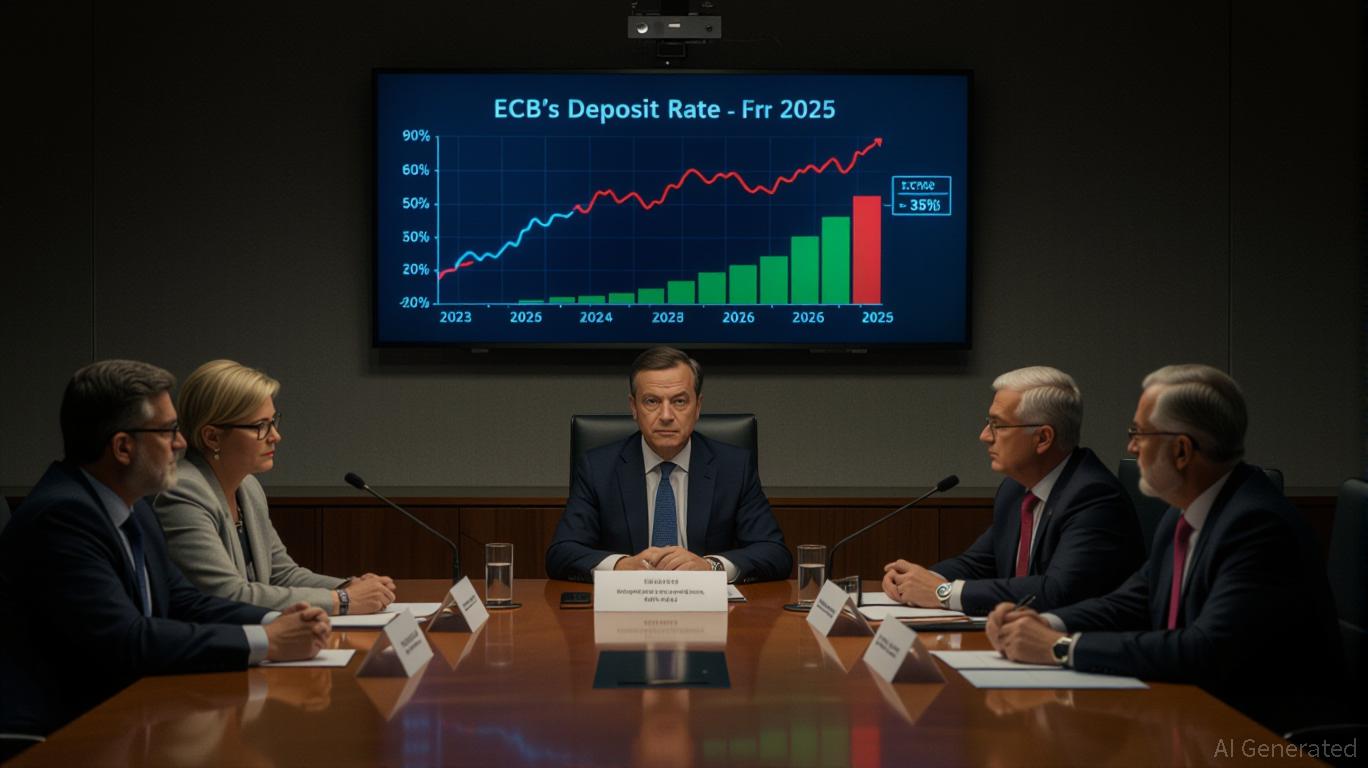
The European Central Bank’s (ECB) recent policy debates have exposed a critical fault line in its inflation-fighting strategy: the growing influence of dissenting voices like Robert Holzmann. As the eurozone navigates a fragile path toward price stability, Holzmann’s cautious stance—rooted in a belief that monetary stimulus is no longer necessary—has reshaped market expectations and forced fixed-income investors to recalibrate their portfolios. This divergence within the ECB’s Governing Council underscores a broader question: How do policy disagreements translate into market behavior, and what tools could enhance transparency to guide investors in a post-hawkish environment?
Holzmann’s Dissent: A Cautionary Signal for Markets
Holzmann’s March 2025 dissent against a rate cut—his lone vote against easing—reflected a conviction that inflation was already converging toward the ECB’s 2% target and that further stimulus risked overstimulating the economy. His argument, that the neutral rate (1.75%–2.25%) had been reached, has tempered market expectations for aggressive easing. While investors initially priced in a sixth consecutive rate cut by April 2025, Holzmann’s caution has anchored expectations to a more measured path, reducing the urgency for rapid rate reductions.
This shift is evident in the ECB’s Consumer Expectations Survey, where median 12-month inflation expectations fell to 2.8% in May 2025 from 3.1% in April, signaling growing confidence in the central bank’s ability to stabilize prices. Holzmann’s emphasis on neutrality has also highlighted the risks of overreacting to short-term data, a concern that resonates with investors wary of volatility in energy prices and wage growth.
The Dot Plot Dilemma: Transparency vs. Ambiguity
While the ECB has resisted adopting a dot plot—a tool used by the U.S. Federal Reserve to communicate policymakers’ rate forecasts—proponents like Holzmann argue it could enhance market clarity. A dot plot would allow investors to gauge the range of views within the Governing Council, reducing uncertainty about future policy paths. For example, if the ECB had published a dot plot in March 2025, it might have revealed Holzmann’s outlier position alongside the majority’s preference for easing, providing a clearer signal for markets.
The absence of such a tool has left investors relying on fragmented signals, such as voting records and post-meeting statements. This ambiguity has led to a “wait-and-see” dynamic, where fixed-income strategies must remain flexible. For instance, the yield spread between Italian and German bonds has widened to 97 basis points, reflecting both fiscal divergences and the ECB’s continued support for periphery markets via its Public Sector Purchase Programme (PSPP).
Fixed-Income Strategies in a Post-Hawkish Environment
Investors are adapting to ECB policy uncertainty by prioritizing inflation-linked instruments and duration management. With the ECB’s neutral rate estimated at 1.75%–2.25%, many are hedging against potential reacceleration in inflation by allocating to eurozone inflation swaps and inflation-linked bonds. These tools offer protection in a scenario where wage pressures in services sectors—Holzmann’s key concern—could reignite price pressures.
Duration laddering has also gained traction, with investors spreading allocations across 3–10-year maturities to balance yield capture with rate risk. The anticipated 25-basis-point rate cut in September 2025 has made intermediate-term bonds more attractive, as longer durations face heightened volatility. For example, German 10-year yields at 2.9025% and French yields at 3.528% have prompted some to shift toward investment-grade corporate bonds and securitized assets, where spreads offer better compensation for risk.
The Path Forward: Policy Clarity and Strategic Agility
The ECB’s refusal to pre-commit to a rate-cutting timeline has created a “meeting-by-meeting” policy environment, requiring investors to stay agile. If the ECB eventually adopts a dot plot or scenario-based communication, it could reduce market volatility by providing clearer guidance on policy expectations. For now, investors must navigate a landscape where dissenting voices like Holzmann act as a moderating force, tempering expectations for rapid easing while underscoring the risks of complacency.
Investment Advice:
1. Hedge Inflation Risks: Allocate a portion of portfolios to inflation-linked bonds and swaps, particularly in sectors with persistent wage pressures.
2. Balance Duration Exposure: Use duration laddering to mitigate rate volatility while capturing yield in intermediate-term bonds.
3. Diversify Yield Sources: Explore high-quality corporate bonds and securitized assets to offset low government bond yields.
4. Monitor ECB Signals: Track voting records and forward guidance for clues about policy shifts, especially as dissenting views gain traction.
In a world where ECB policy remains a tightrope walk between hawkish caution and market-driven easing, investors who combine strategic agility with a focus on inflation resilience will be best positioned to navigate the uncertainties ahead.
